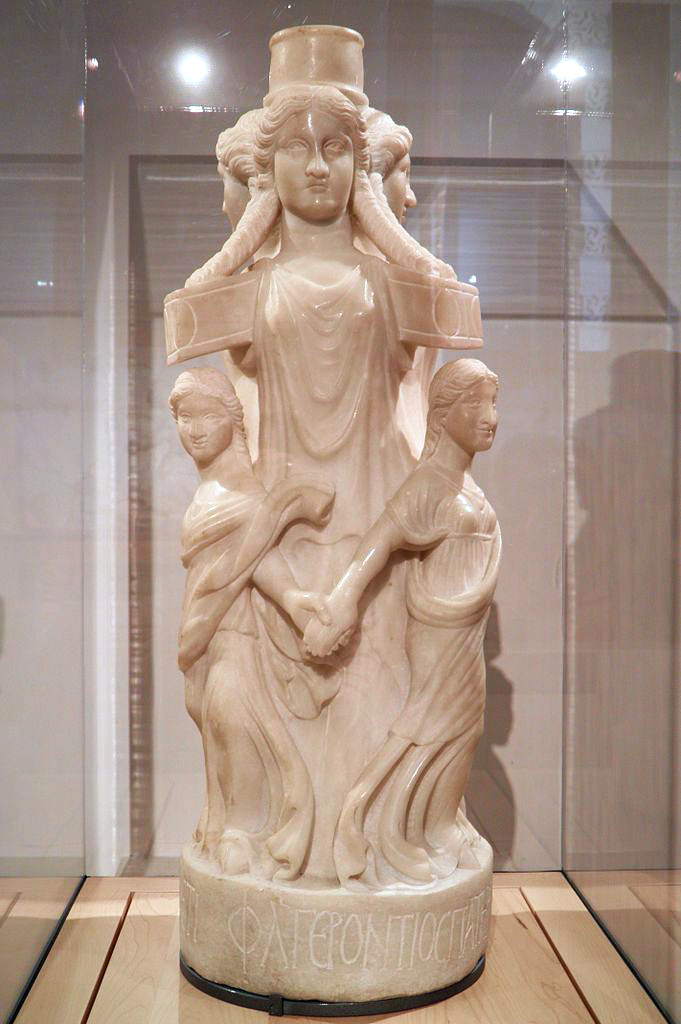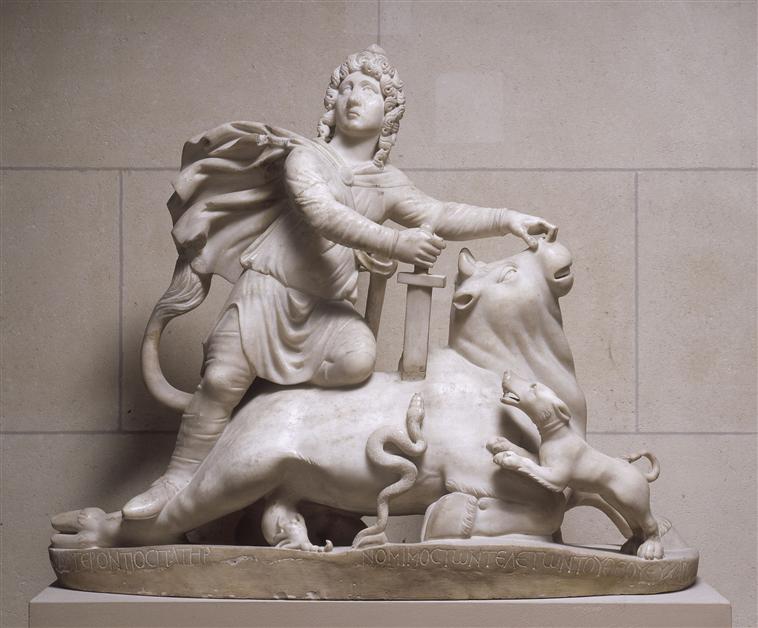
Flavius Gerontios
Alias Φλαουιος Γεροντιος
Pater nominos in Sidon, he consecrated a number of sculptures, including a Hecataion.
Biography
of Flavius Gerontios
- Flavius Gerontios was a Pater at the Mithraeum of Sidon.
- Active 188 in Sidon, Syria-Coele, Syria [TNMM 156].
- Active 389 in Sidon, Syria-Coele, Syria [TNMM 157].
- Mentioned in TNMM 305, Sidon, Syria-Coele, Syria.
TNMP 83
The title Pater nominos, 'father of the customs' or 'lawful father' is also attested at Tomis (in Scythia) in connection with a priest of Hekate. For the use of fictive parental language for leaders or benefactors of associations, see Harland 2009.
Some of the statuettes bear inscriptions stating they were paid for by Fl. Gerontios in the year ‘500’, although there has been some deliberation as to what year this is in the modern calendar. If it is taken from the Seleucid calendar then it would be the equivalent of AD 188, while Ernest Will observed that, based on the local calendar of Sidon, which is established from stelae found in the town, the date is more likely to have been AD 398. Will also argued that the name Gerontios is far more common at the turn of the 4th c. than during the 2nd.
The name Flavius indicates that Gerontios’ ancestors had been made Roman citizens in the period of the Flavian emperors, nearly two centuries earlier, since the enfranchised added to their own names that of the ruling house. The expression “authorized pater” indicates that the Mithraic cult had some form of consecration comparable to ordination. See Leroy A. Campbell, Typology of Mithraic Tauroctones, Berytus, XI (1954), no. 101.
As F. Baratte suggests, one has the impression that there were two or even three mithreas at Sidon, of different periods. A part of their installations was gathered by Flavius Gerontios and installed in his sanctuary at the end of the 4th century.
References
- Kronos mithriaque — Musée du Louvre
- David Walsh (2018) The Cult of Mithras in Late Antiquity
- Ernest Will (1950) La Date du Mithréum de Sidon. Syria. Tome 27 fascicule 3-4, pp. 261-269
- Jean-Marie Saint-Jalm (2013) Vers la localisation du mithraeum de Sidon
- Philip Harland (2016) Associations in the Greco-Roman world
- Richard Lindsay Gordon (2001) Trajets de Mithra en Syrie romaine
Mentions
Hekataion of Sidon
TNMM 305
The Hekataion of Sidon shows a triple Hekate surrounded by three dancing nymphs.
Lion-headed Aion from Sidon
TNMM 157
The controversial Italian journalist Edmon Durighello discovered this marble statue of a young naked Aion in 1887.
Mithraeum of Sidon
TNMM 11
The Mithraeum of Sidon may have escaped destruction because the Mithras worshippers walled up the entrance to the underground sanctuary.
Taurcotony sculpture from Sidon
TNMM 156
The Mithras killing the bull sculpture from Sidon, currently Lebanon.


.jpg)

Comments